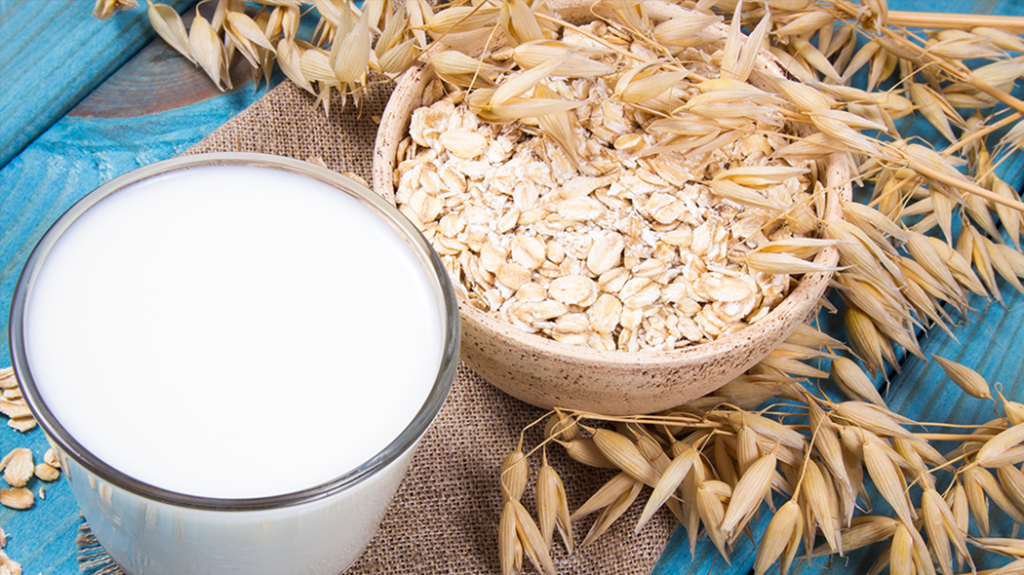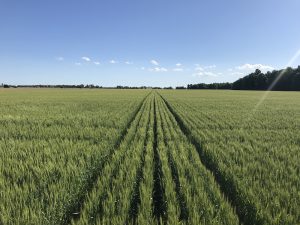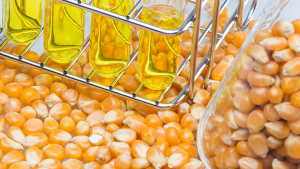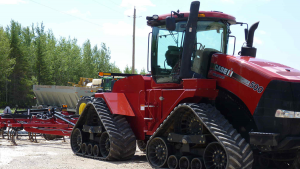Oats to oatmeal
A LOOK AT BREEDING AND PRODUCING OATS

WHEN THINKING OF oats, oatmeal, feed, and cover crops come to mind. Weikai Yan, oat breeder at Agriculture and Agri-Food Canada in Ottawa, works to develop oat varieties that can be used in both feed and food industries.
Developing a new oat variety takes approximately 10 years. Yan begins by making 50 to 100 new crosses in a greenhouse, which produces approximately 10,000 individual offspring. In the second and third years he advances the plants in a greenhouse, cultivating three generations a year without selection. In the third year he plants the individual plants in a field and begins to make visual selections; selected lines are grown in larger plots in the fourth year and visually selected again. Throughout the process important breeding objectives such as plant height and architecture, lodging, maturity, and grain quality are studied. The goal is to select roughly 200 to 300 lines that will be tested in multi-location yield trials and selected for yield and quality in the next five years to identify one or more lines that are eligible for registration as new cultivars.
When looking at quality in the visual selection stage Yan and his team look at seeds. Seeds must be good looking; big, plump, and white as those are traits growers like. Test weight needs to be heavy, and the kernels must be uniform. In the yield trial stage, beta-glucan and groat percentage are added as selection criteria. Yan shares “if the growers want to sell to Quaker, the oats must have high-enough beta-glucan or Quaker won’t take them. Also, Quaker wants small hulls, as too much material is lost during milling when oats have a large hull.” Hulless oats might be a solution at some point, however millers don’t currently buy hulless oats and there are not many hulless oats grown in Canada due to poor yields.
In the first year of yield trials, the lines are placed at four different locations. By the second year the lines are narrowed down to roughly 60 which will be placed at more locations for testing. “By the third year of yield trials I will have a pretty good idea on which lines are useful,” says Yan. The lines that made the cut are placed into registration trials. Three years of yield data from these trials are required for registration in Ontario and Quebec. And finally, after approximately 10 years, one or two good lines can be pulled out which have better qualities and higher yield than the checks.
Yan then asks for registration support from the Ontario Cereal Crop Committee. If a variety is supported, Agriculture and Agri-Food Canada will advertise that they have a new cultivar available to companies for licensing.
RUST RESISTANCE
Yan’s breeding program focuses on rust resistance, developing varieties for different regions in eastern Canada. Rust resistance is very important in southern Ontario, without it there can be up to a 50 per cent yield loss. Northern Ontario, Quebec, and the Maritimes do not have as much rust pressure so varieties that are good for southern Ontario are not often ideal for others. Yan shares that “rust is controlled by only a few genes, so it is very easy to tell resistant versus susceptible oat varieties at trials.”
COLLABORATION
Yan attributes the success of his program to his team and the ability to work with other oat researchers across the country. Multiple test locations are very important to the program as they provide data and allow selecting for region-specific cultivars. Yan values grower input that is received through Grain Farmers of Ontario, as it is important to know grower concerns and wish lists. Yan also has very close ties with Quaker as they run a North American oat test which he contributes to. Quaker grows oats from all the breeders and other sources at 12 locations across Canada and in North Dakota. They can then decide which varieties they prefer and that are approved for delivery into their processing plants. Yan shares that “every step is important, if one thing isn’t perfect the whole chain breaks.”
NORTHERN ONTARIO VARIETIES
Terry Phillips, seed grower and Certified Crop Advisor from New Liskeard, works with SeCan and Canterra to make available early season, short stature oat varieties in Northern Ontario. Oat varieties are placed in advanced trials, sometimes two years ahead of when they become licensable, allowing Phillips to see how they may suit the area.
Once breeder seed has been received, Phillips grows it to create foundation seed, then registered seed, and finally enough certified seed so that when the variety is licensed and available to farmers there is enough for planting across a number of acres. Phillips notes that “usually a new variety lasts about two years, after that it can end up as bin run fairly quickly, it is hard for a breeder to continuously improve the genetics without funding.” Much of the seed oats that move out of Phillips’ operation are sold without seed treatment, especially if being moved in bulk, to reduce any seed treatment contamination of harvested grains. If the oats are being treated, totes are more often used.
The oat business is critical to the profitability of Northern Ontario farmers. “There are more competitors with new genetics and varieties becoming available from western provinces, however many oats aren’t suitable for Quaker in Ontario,” Phillips explains. “The market for eastern Canada is Quaker Oats.” To create a good supply for Quaker, they aim to promote three approved varieties to reduce the variability of the plant feedstock. However, the supply of seed can be an issue. If there are droughts or other constraints, they sometimes find that Quaker may be more flexible in what is accepted.
Many of the oats grown in the New Liskeard area require drying, and then are trucked to the Quaker plant in Peterborough. Sometimes they are delivered via rail, however “it can be costly to use rail for such a short distance,” Phillips points out.
What is next in Northern Ontario oat production? Phillips aims to promote plant growth regulators (PGRs). “There is a lot of unpredictability of nitrogen release due to unknown rain events in the north. If a PGR can be applied when a grower is already doing a pass across the field, it may save the oats lodging later in the season, increasing yield and grower success further.
The oat breeding program is supported in part by the Government of Canada under the Canadian Agricultural Partnership’s AgriScience Program, with industry support from the Canadian Field Crop Research Alliance and oat millers across Canada. •


























